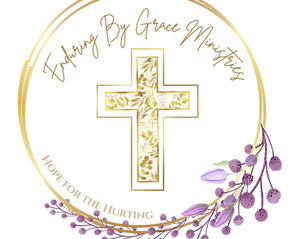

7 days ago3 min read
Nov 208 min read


Nov 207 min read

.png)
Recent Posts




Archive
Tags

The New Testament we have today was achieved through trial and error over a 200-year period.[1] Church leaders realized they needed to determine the New Testament books to avoid heresy going against the truth of God.
Two key figures that made church leaders realize the need for canonization were Marcion and Montanus. Marcion’s beliefs were that the God of the Old Testament was inferior to the God of the New Testament though God is the God of both the Old and New. With these beliefs he compiled his own scriptures - a “stripped down” version of the gospel of Luke and Paul’s letters.[2] Due to his version of Scripture Christians realized they needed to canonize God-breathed scripture excommunicated him in 144.[3] Montanus became prominent in 155 and taught the Paraclete age had come, and that the Paraclete spoke through him[4] while we know that the Paraclete was given to all who believed. He also taught that the New Jerusalem would soon appear, yet again we know that the new heaven and new earth will come after Jesus’ second coming as taught in Revelation. As if those two heresies were not enough, he also taught that he, Maximula, and Priscilla were able to forgive sins.[5] Now, this is a major red flag because if humans could save humans, then Jesus would not have had to die on the cross and rise again, it defeats the purpose of the gospel message. Though his teachings are contradictory to scripture they spread from Asia Minor to Europe to North Africa.[6] These men were dangerous by the way they were leading others astray thus the Christians of this time needed to promptly canonize God-breathed scripture.
The first attempted list of Scripture was found in the Muratorian fragment dated about 170 by an unknown author but named after its founder.[7] Another list to come was written by Eusebius of Caesarea who wrote the first church history book that consisted of ten volumes. It is in his third volume that he divides books into sacred, disputed, spurious, and heretical.[8] While these lists are vital to the development of the canon we have today, Athanasius’ list has been the most recognized as he is the champion of the Council of Nicaea and bishop of Alexandria from 328 to 373.[9] While his list containing the current 39 Protestant Old Testament and the 27 books in the current New Testament it was not yet official during his time but was considered of great importance and led to future councils listening to his advice.[10]
Considering everything above it is also important to note the effects of persecutions. These persecutions dictated life or death situations – was the book a person had during the persecution era worth dying for or was it not needed for canonization? This was a question many early Christians needed to consider because of the eb and flow of Roman emperors and their attitude toward Christians. In the year of 303 Emperor Diocletian ordered for all Christian scriptures to be turned in and burned.[11] Canonization was a life-or-death situation. It needed to be decided whether a book should be freely surrendered or kept and the owner face arrest or death. This era of persecution prompted early church leaders to establish the sacred writings.
The Council of Hippo in 393 wad the first known council to establish a conclusive list of the New Testament books.[12] Following this council in 397 the Council of Carthage verified and reproduced the records from the Council of Hippo. This council stated that no other books besides those listed should be read in church and used for teaching. While this decision was not put in immediate effect for churches besides those in northeastern Africa its approval by Augustine and consensus from Christians across the Roman empire those 27 New Testament books closed the canon.[13]
While we hold on to the truth of our New Testament it is interesting to look at New Testament Apocrypha and see what they have to say and how that correlates with scripture. I found the Apocalypse of Peter (Akhmim) interesting because it was written by Peter who witnessed the resurrection and had great revelation from Christ.[14] I find this interesting because we have authoritative scripture from Peter yet wonder if we can learn from this too. I also found the Gospel of Thomas interesting because he viewed Jesus as an authoritative teacher. While this is important to recognize Jesus is so much more than a teacher. This literature also relies on interpretation of Jesus’ words instead of taking them as He said it.[15] This is where human error can run rampant thus, I see why this was dangerous to include in the canon. It is interesting to view apocrypha with the authority of scripture.
[1]A Survey of the History of Global Christianity. Nashville, TN: B&H Academic, 2020. [2] Mark Nickens, “Study the Church Resources for Studying the Bible and Church History,” Study the church, accessed April 5, 2021, https://studythechurch.com/earlychurch. [3] IBID [4] IBID [5] IBID [6] IBID [7] Mark Nickens, A Survey of the History of Global Christianity (Nashville, TN: B&H Academic, 2020). [8] IBID [9] IBID [10] IBID [11] IBID [12] IBID [13] IBID [14] “Apocalypse of Peter (Akhmim),” Apocalypse of Peter (Akhmim), accessed April 6, 2021, http://www.earlychristianwritings.com/apocalypsepeter.html. [15] “The Gospel of Thomas,” The Gospel of Thomas, accessed April 6, 2021, http://www.earlychristianwritings.com/thomas.html.

Comments